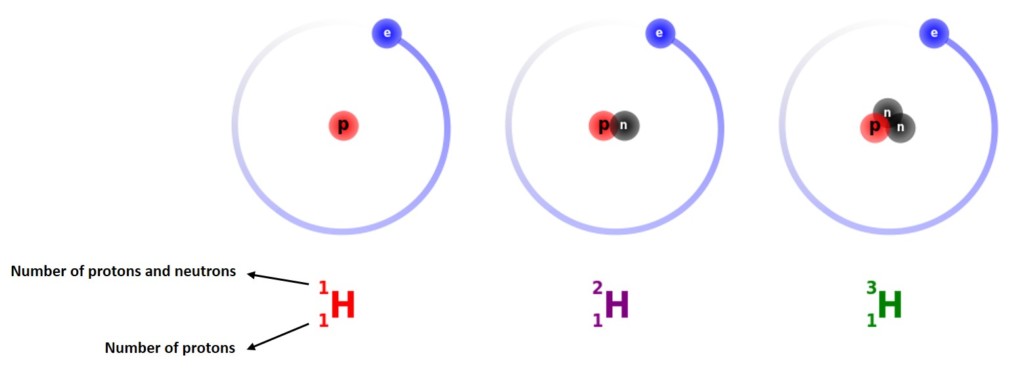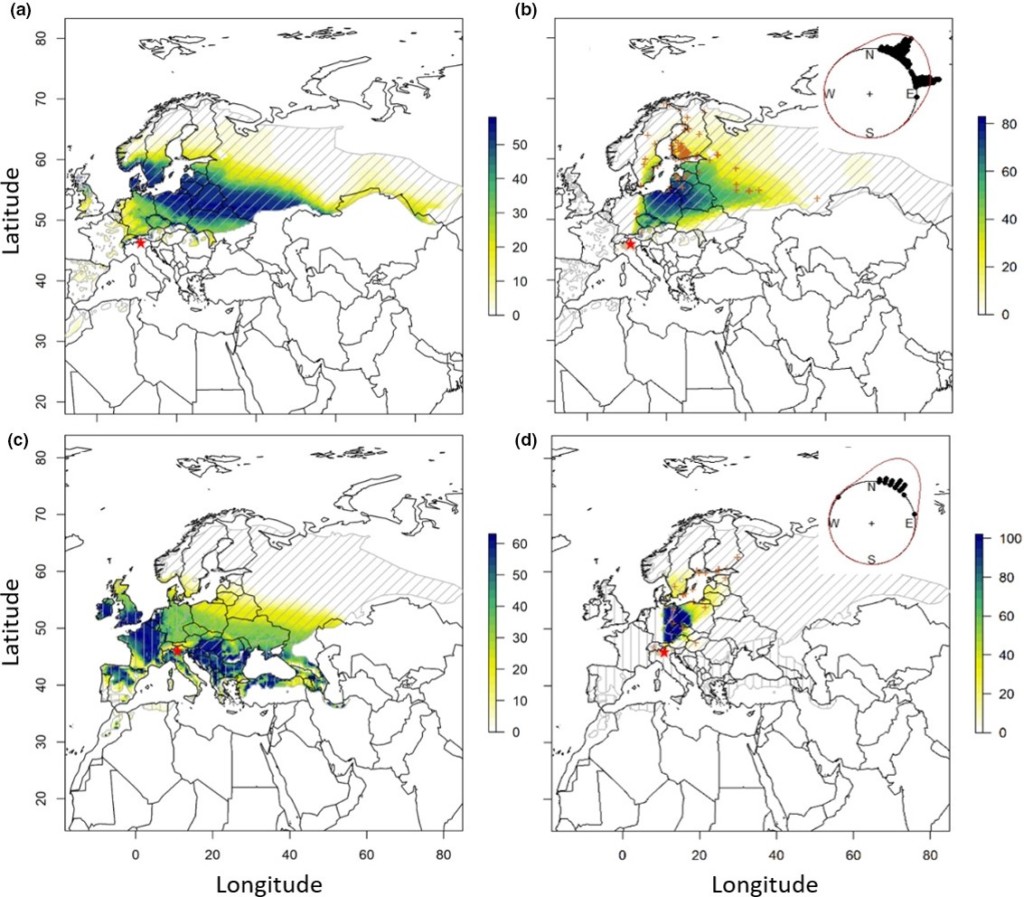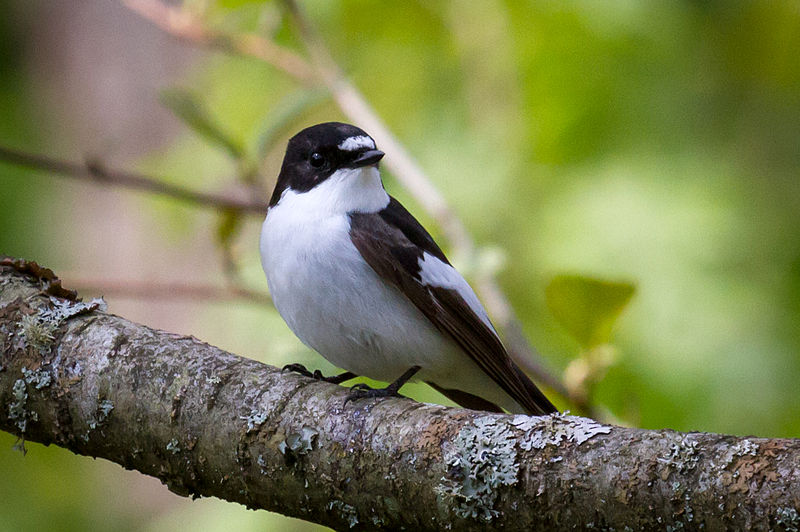LINKED PAPER
Natal origins and timing of migration of two passerine species through the southern Alps: inferences from multiple stable isotopes (δ2H, δ13C, δ15N, δ34S) and ringing data. Franzoi, A., Bontempo, L., Kardynal, K. J., Camin, F., Pedrini, P. & Hobson, K.A. 2019. IBIS. DOI: 10.1111/ibi.12717. VIEW
On their migration to the south, numerous bird species pass through the Alps, which act as a migratory funnel. Birds from Western, Central and Eastern Europe converge and cross the mountain range side-by-side (Bruderer & Jenni 1990). When ornithologists catch a migrating individual in the Alpine region, they often have no clue where it came from. A group of international scientists used ring recoveries and isotopic data to pinpoint the origins of two European songbirds that migrate through the Alps: the Pied Flycatcher (Ficedula hypoleuca) and the Robin (Erithacus rubecula). Where did these small passerines come from?
A quick physics lesson
What are isotopes, you might wonder? Some basic physics is necessary to understand the principle behind the use of isotopes in migration research (West et al. 2006). Atoms are composed of three basic particles: electrons, protons and neutrons. The negatively charged electrons zip around the nucleus, which contains the protons and neutrons. The number of protons in the nucleus determines the element. For example, a hydrogen atom has one proton and a carbon atom has six. The number of neutrons in the nucleus, however, can vary. Variants of a particular chemical element, which differ in the number of neutrons, are called isotopes. Hydrogen atoms come in three isotopic variants with zero, one and two neutrons.
 Figure 1 The three isotopes of hydrogen all have one proton in the nucleus (red circle), but differ in the number of neutrons (zero, one or two black circles). The electrons (blue circles) circle around the nucleus. Adapted from Wikimedia Commons © Dirk Hünniger.
Figure 1 The three isotopes of hydrogen all have one proton in the nucleus (red circle), but differ in the number of neutrons (zero, one or two black circles). The electrons (blue circles) circle around the nucleus. Adapted from Wikimedia Commons © Dirk Hünniger.
Feathers
When birds grow up in their natal areas, they incorporate isotopes from the environment in their tissues. Some isotopes vary predictably over continental scales, such as the hydrogen in precipitation (Tonra et al. 2014). By characterizing the isotopic composition in particular tissues (e.g., feathers), you can deduce the origin of a bird. The environment has left an isotopic fingerprint on the bird (Inger & Bearhop 2008). The researchers measured the composition of hydrogen isotopes in the birds that migrated through the Alps. The isotopes correlated with a broad geographical range, which could be narrowed down by incorporating the ringing data. It turned out that Pied Flycatchers primarily came from the area between the Baltic Sea Basin and Eastern Europe. Robins could be traced back to a Central European region.
 Figure 2 The probable origins of Pied Flycatchers (a, b) and Robins (c, d) that migrate over the Alps (indicated with red star). Predictions based solely on hydrogen isotopes cover a wide distribution (a, c) that can be narrowed down by including ringing data (b, d).
Figure 2 The probable origins of Pied Flycatchers (a, b) and Robins (c, d) that migrate over the Alps (indicated with red star). Predictions based solely on hydrogen isotopes cover a wide distribution (a, c) that can be narrowed down by including ringing data (b, d).
More isotopes
The researchers also investigated the isotopic compositions of other elements, namely carbon, nitrogen and sulfur (McCutchan et al. 2003). In contrast to hydrogen, the continent-wide gradients of these isotopes are not well described yet and provide promising avenues for further research. In particular, these elements can provide insights into the diet of the birds (carbon and nitrogen) and the distance to marine regions (sulfur). A large-scale project is needed to characterize the continental patterns of these isotopes in order to get a better understanding of bird migration in Europe.
References
Bruderer, B. & Jenni, L. 1990. Migration across the Alps. In Gwinner, E. (ed.) Bird Migration: 60-77. Berlin: Springer-Verlag. VIEW
Inger, R. & Bearhop, S. 2008. Applications of stable isotope analyses to avian ecology. Ibis 150: 447-461. VIEW
McCutchan, J. H., Lewis, W. M., Kendall, C., & McGrath, C. C. 2003. Variation in trophic shift for stable isotope ratios of carbon, nitrogen, and sulfur. Oikos 102: 378-390. VIEW
Tonra, C. M., Both, C., & Marra, P. P. 2014. Incorporating site and year‐specific deuterium ratios (δ2H) from precipitation into geographic assignments of a migratory bird. Journal of Avian Biology 45: 1-9. VIEW
West, J. B., Bowen, G. J., Cerling, T. E., & Ehleringer, J. R. 2006. Stable isotopes as one of nature’s ecological recorders. Trends in Ecology & Evolution 21: 408-414. VIEW
Image credits
Featured image: Pied Flycatcher Ficedula hypoleuca | Lars Falkdalen Lindahl | CC BY-SA 2.0 Wikimedia Commons




